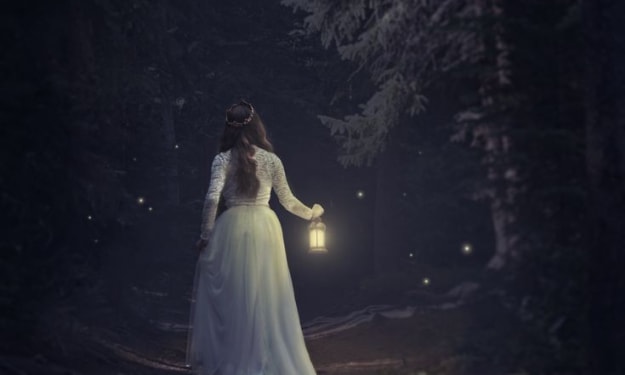
After 1950 contempt the bourgeois novel fell, the same that now aspires to be part of literature. But first, in the fascist period and beyond, there is a clear division between mass literature and entertainment, with large-scale novelists (Zuccoli, D’Ambra, Pitigrilli, Da Verona) and novels written by intellectuals for other intellectuals (Gadda, Landolfi, Bilenchi, Vittorini, Bersani).
Thus a double market for literature is formed. While Guido da Verona sells two and a half million copies, thanks above all to the success of Mimì Bluette flower of my garden, Palazzeschi, Moravia of Gli indifferenti, and Bontempelli always remain below one hundred thousand copies. Only Sorelle Materassi touches two hundred thousand.
In the first half of the century, successful fiction continues to practice structures already tested at the end of the nineteenth century, with the addition of new genres such as the heroic fascist novel, the “pornographic” novel by Pitigrilli, the humorous one by Achille Campanile and, finally, romance.
Liala’s first novel — pseudonym of Liana Cambiasi, Negretti Odescalchi (1897–1995)— is from 1931.
“I was born in Carate Lario”, she tells us, “in the beautiful villa that my grandparents had on the lake.” She marries with the Marquis Cambiasi but the marriage does not work and Liala finds love in a young aviator, Vittorio Centurione Scotto, with whom she has a baby girl. Unfortunately, in 1926, the officer died in an accident, crashing into the lake by plane, and Liala vented her pain by writing her first novel: Signorsì, “not to go crazy,” she says. The novel has aviation as its subject, a theme never discussed by a woman before and has immediate public success.
“I owe celebrity to my pilot. It was to be with him again that I wrote Signorsi, which made me immediately famous, because I was talking about those flights that he loved so much. But I got the name “Liala” from d’Annunzio. Even before Signorsì came out, the great Arnoldo Mondadori had spoken to d’Annunzio about a young woman who had written an aviation novel, something exceptional for those times. The Commander wanted to get to know me: I went to the Vittoriale with Mondadori and, by signing one of his photos, immediately d’Annunzio changed my Liana to Liala: because, he said, a wing is well in the name of those who speak with love of wings. He gave me a wing and I flew.”
After twenty days the upset publisher calls her: the first edition is already sold out.
From 1930 to 48 she was romantically linked to another officer, Pietro Sordi, although her husband accepted her again and gave her another daughter.
In addition to the military environment, to individual characters, such as Lalla Acquaviva the protagonist of the trilogy with the same name, in addition to the plots, what we have of her novels is more the image of a style, made of multiple shades.
First of all the characters. Whether they are officers like Furio di Villafranca, or painters like Milo Drago, or sculptors, they are always aristocratic, tall, handsome — dark-haired with blue eyes or blond with black eyes — capable of dominating you with their eyes (nothing to do with the sadistic Christian Gray) to woo you with gallant gestures that they have in their own DNA.
The women are models with fire-colored hair and green eyes, or shy modest girls with braids and a low gaze. They have high-sounding and strange names — said to be taken from horse racing magazines: Beba, Coralla, Periwinkle, and look more sanguine and d’Annunzian than Pre-Raphaelite.
“She gave one last brush to the fluffy, light and wavy hair that brushed her shoulders, she moistened her lips. She put on hes overcoat. On the dark blue of the heavy fabric, the wonderful tawny hair shone, of a beautiful dark fawn, which divinely framed the white face, on which the red lips, full of healthy and violent blood, put a lively note of ardent color. “ (From The rainbow in the sky)
The environments are described with a visual and aestheticizing minutia that appeals to all five senses. Every detail of architecture, furnishings, clothing, food is shown. The tables are set sumptuously, or in a rural way, the bread is fragrant, the chicken crispy. You can feel penetrating perfumes, noises, smells, you can see the colours stand out as in a painting.
“On a white tablecloth, made of fine Flanders, she had placed almost luxurious dishes and glasses, the cutlery was of base metal, but shiny and clean. Only, in the middle of the table, stood a silver jar, in which a purple chrysanthemum was immersed.” (from Melody of ancient love)
“A great silence weighed on all things, dominated the room. And in that silence, the ticking of two clocks was heard. The small one that stood on a topaz-colored opal table, and the large, electric one, embedded in the wall of the anteroom. Two rhythmic and dissimilar sounds that gave a sense of the transience of time.” (From Like the kisses on the water)
The sensuality exudes from the scenes:
“They walked close, when the wind lifted Mabel’s overcoat it brought her to touch Arno Dala’s legs. And he, for that caress of the beloved woman’s dress, rejoyed.” (From Like the kisses on the water)
Eroticism takes the form of “blood that flows faster in the wrists”, in murky glances, in a repressed but tangible desire, which made those same mother and grandmothers — who passed the books on which they had cried and secretly dreamed — fear that the reading was too risky for “Signorinette”, wanting to stay on topic and quote Wanda Bontà.
“Her face bore traces of the long night of love, but her eyes were full of joy. Never, like that night, had Beba been his, never had the feeling of possession been so strong and terrible. Beba’s placid sensuality had flickered and quivered, the beautiful flesh had unusually animated, and never had Beba’s face been so wasted and devastated by kisses.” (From Signorsì)
The style is clean but redundant, pletoric, played on synonyms: “I want to know what languages you speak, which idioms you know.”
Liala is an underrated writer, a skilled narrator, capable of making you see, hear and touch what she tells, capable of creating atmospheres that are not forgotten. She is an exponent to all effects of decadentism, captured in its aestheticizing, baroque aspects, with strong colours made of sex, love and death, of great otherworldly passions (Lalla who returns), of libertine men looking for pure girls and virgins to crease.
About the Creator
Patrizia Poli
Patrizia Poli was born in Livorno in 1961. Writer of fiction and blogger, she published seven novels.






Comments
There are no comments for this story
Be the first to respond and start the conversation.